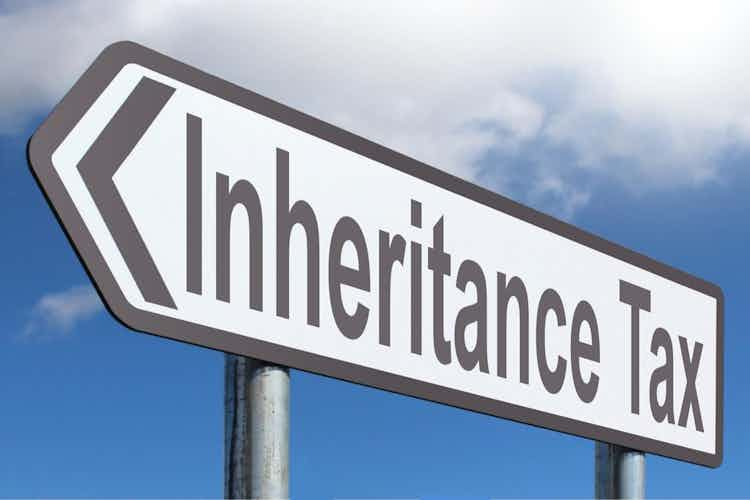It is never too early to introduce inheritance tax (IHT) into your long-term financial plans. Unfortunately, many people leave this until their later years, when the opportunity to reduce potential inheritance tax liabilities may have diminished. IHT must be considered (even if no action is required) during your annual financial review.
Will IHT really be a problem?
While most people in the UK will not have any IHT issues, a growing number will. Despite intense speculation, the Chancellor recently decided not to reduce the IHT nil rate band (NRB), which currently stands at £325,000. However, he did confirm that the rate would be frozen until 2026.
This may seem irrelevant, but as the NRB typically increases in line with inflation, this will draw more people into inheritance tax as the cost of homes and investments increase. This is known as "fiscal drag", a subtle but recognised way of increasing tax income. Simultaneously, the Chancellor announced that capital gains tax and income tax thresholds would also be frozen until 2026.
Property price rises add fuel to the IHT fire
Before dismissing IHT as a potential problem in 10 years, 20 years or longer, consider the average cost of homes in the UK as of November 2020:
| Region | Average property price November 2020 |
| East Midlands | £208,662 |
| East of England | £302,624 |
| London | £513,997 |
| North-East | £140,248 |
| North-West | £180,280 |
| South-East | £342,271 |
| South-West | £278,391 |
| West Midlands | £213,974 |
| Yorkshire and the Humber | £180,856 |
Source: https://www.gov.uk/government/news/uk-house-price-index-for-november-2020
When you consider that some families may have other investments, assets and even life insurance policies, more people could be facing an IHT liability on their death.
Allowances and transfer of unused nil-rate band
It is essential to consider your allowances when alive and also be aware of those your partner can use upon your death. We will now look at some of the allowances and NRBs you can use to reduce inheritance tax.
Inheritance tax NRB
As we touched on above, the current inheritance tax NRB is £325,000 per person. Consequently, if, on your death, your estate is valued at less than the NRB, there will be no inheritance tax liability. Anything over the NRB will typically attract a tax charge of 40%.
Residence NRB
This is a relatively new allowance that was introduced to protect family homes. The rate currently stands at £175,000, and this has also been frozen until 2026. This allows you to leave your home to any of the following:
- Children
- Grandchildren
- Stepchildren
- Adopted children
- Foster children
This additional allowance can reduce or even eliminate potential inheritance tax liabilities on your family home.
Making gifts to family and friends
Many people are now more acutely aware of the value of making gifts to family and friends while still alive. This not only allows the individuals to receive funds before your death but can, if managed correctly, mitigate any potential inheritance tax liability. Some gifts are tax-free, such as:
- Gifts valued at up to £250 per person per year
- Wedding gifts with a sliding scale for children, grandchildren and other relatives
- Cost of living assistance for an ex-partner, child or dependent
- Annual gift allowance of £3000
You are perfectly entitled to give cash or asset gifts to anybody of your choice. However, if you die within seven years of the gift, they may be drawn back into your estate and subject to inheritance tax. These are known as potentially exempt transfers and the sliding scale, known as taper relief, is as follows:
| Time between gift and death | Potential IHT liability |
| Less than three years | 40% |
| 3 to 4 years | 32% |
| 4 to 5 years | 24% |
| 5 to 6 years | 16% |
| 6 to 7 years | 8% |
| 7 or more years | 0% |
This ensures that those who may be aware of their forthcoming death cannot "gift" elements of their estate to avoid inheritance tax.
Claiming unused allowances
It is crucial to be aware of the ability to claim allowances, which your spouse or civil partner has not used on their death. As there is usually no inheritance tax to pay if you leave your estate to your spouse or civil partner, you could effectively double your inheritance and residence allowances. The calculations are as follows:
Inheritance tax allowance
2 x £325,000 = £650,000
Residence allowance
2 x £175,000 = £350,000
Total combined allowances
£1 million
So, assuming that your spouse did not use their IHT/residence allowances upon their death, you could effectively claim these and double your allowances. Obviously, £350,000 of that allowance would only be applicable if you left your property to any of the family members listed above. The additional NRB of £650,000 is for the remainder of your estate.
Tax planning is vital
As we saw with the freezing of IHT and the residence allowance in the last budget, nothing is ever set in stone when it comes to future taxation. Therefore, it is essential to include inheritance tax planning as part of your annual financial review.
There are numerous ways in which you can protect your estate on death. For example, the annual gift allowance, and tax-exempt gifts, can be used for friends and family at any time. If you leave funds/assets to friends and family in your will, they will count towards your estate and may be subject to inheritance tax.
Planning for the future, today!
It is never too soon to include inheritance tax planning in your annual financial review. As we touched on above, there are perfectly legal ways and means of reducing a potential inheritance tax liability. In some cases, you may decide to make use of trusts as a means of separating your assets, although this is an area that requires specialist advice.
The subtle manner in which the UK government has frozen various tax allowances until 2026 will see more people facing potential inheritance tax bills in the future. Consequently, it is crucial to stay one step ahead via the efficient and perfectly legal management of your finances and assets. There are numerous allowances available to you in life and death; make sure you utilise them to benefit you and your family.
Image Credit: Alpha Stock Images, Original Image, CC BY-SA 3.0







